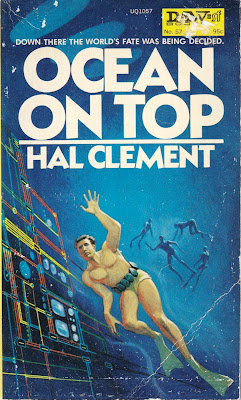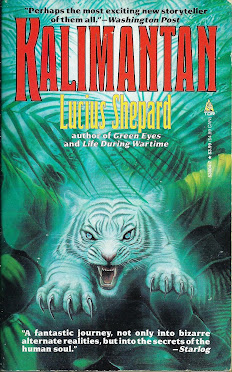Back before the term ‘steampunk’ existed, there was The Wild Wild West, created by CBS associate producer Michael Garrison to take advantage of the spy craze sweeping American pop culture during the mid-60s. Characterized as ‘James Bond on a Horse’, the pilot episode aired on September 17, 1965, and became a hit.
I remember watching episodes of The Wild Wild West when it was first broadcast, and later again in the mid 1970s, when the show was widely syndicated. While some episodes were rather pedestrian Western tales, and others adopted a tongue-in-cheek, satirical tenor, there were rare episodes with an genuinely offbeat, imaginative focus that showcased proto-steampunk, and sometimes horror or supernatural themes, too.
‘The Wild Wild West: The Series’ (250 pp) first was published by the Arnett Press in 1988. A 30th Anniversary Edition (below) was reissued in 2018 by self-publisher CreateSpace, with corrections and revisions, a better print quality, additional content, and more color reproductions.
‘WWW:TS’ is a labor of love on the part of the author, fangirl Susan Kesler, who spent two years assembling the book, interviewing former cast and crew members, and gathering memorabilia.
Filled with (mostly b & w) stills, the book features season-by-season synopses of all episodes, with some synopses accompanied by ancillary text boxes that touch upon interesting backstories to a particular episode.
Other of the book’s chapters deal with the intrigues and politics of producing the show, and offer interesting anecdotes; for example, although the show continued to enjoy strong ratings as its third, and final, season ended, the network’s concern over the show’s violent content probably factored into its decision to cancel the series.
Other chapters touch on the personalities of Robert Conrad (Jim West) and Ross Martin (Artemus Gordon). As I expected, the 5’ 2” Conrad suffered from a Napoleon Complex that saw him and his stunt crew regularly risking serious injury in pursuit of macho undertakings, including after-hours brawls in a local watering hole.
Ross Martin, for his part, envied Conrad's position in the leading man role, and regularly complained that in terms of the show’s scripts, the 'Artie' character just wasn’t getting the action with the chicks that he should’ve been getting !
Author Kesler recounts the circumstances behind Martin’s near-fatal heart attack in August, 1968, which kept him off the WWW set for nearly four months. According to an interview in later years with his wife, Olavee, Martin drank 25 – 30 cups of black coffee per day, and smoked 3 -4 packs of cigarettes per day, while adhering to a diet comprised almost exclusively of red meat -! This was not all that unusual an actor's diet in the Mad Men era.
Additional chapters / sections feature an overview of Ross Martin’s various disguises; ‘blooper’ photographs of the cast and crew; an account of a typical day on the set of WWW; memorabilia and collectibles; and capsule summaries of the two ‘revival’ episodes aired in 1979 and 1980.
The book closes with a poem written by Ross Martin.
The book closes with a poem written by Ross Martin.
WWW:TS is aimed at the hardcore fan, but others with a nostalgic bent, and those interested in 60s pop culture, may want to leaf through it as well.

















































































